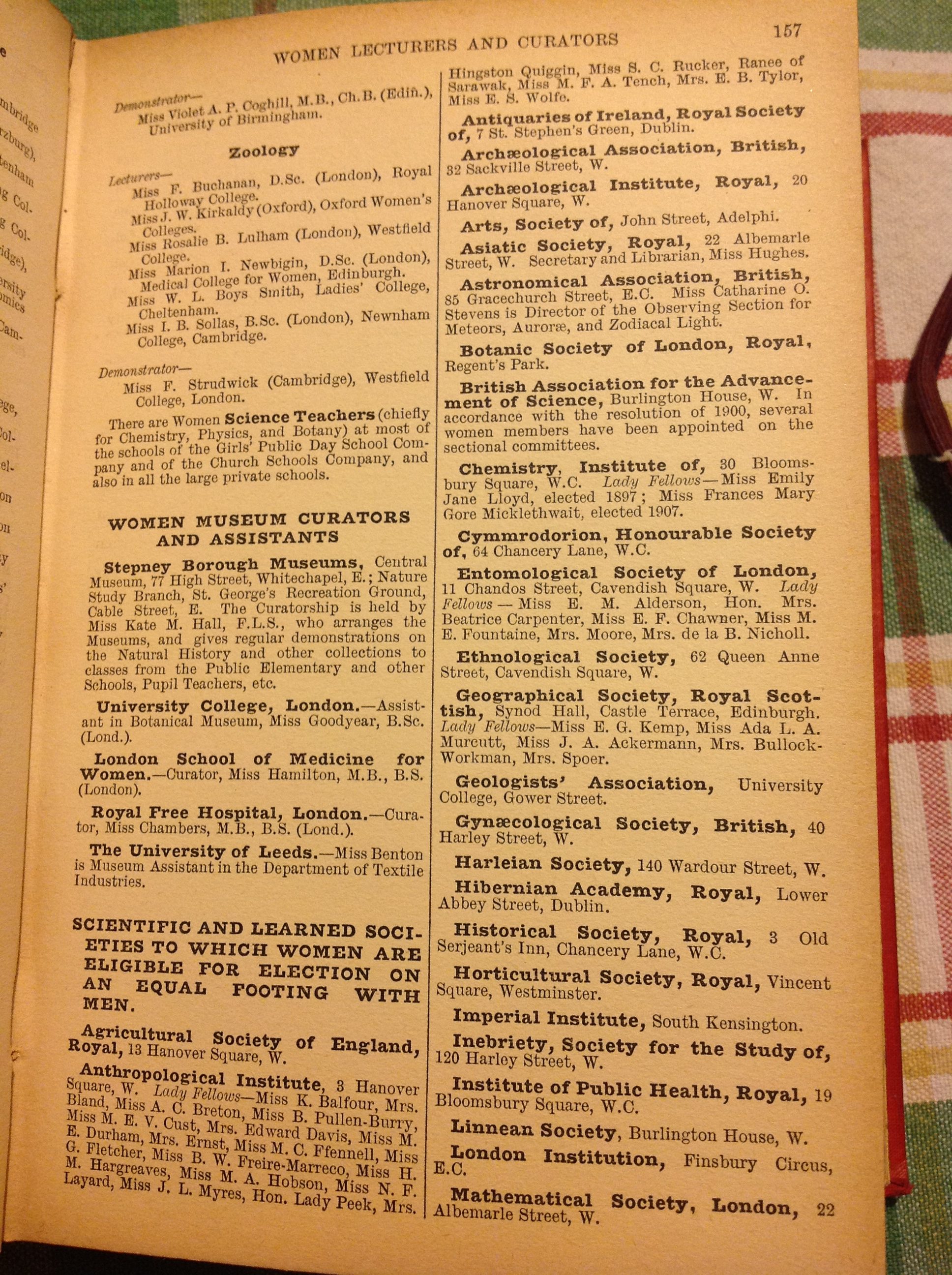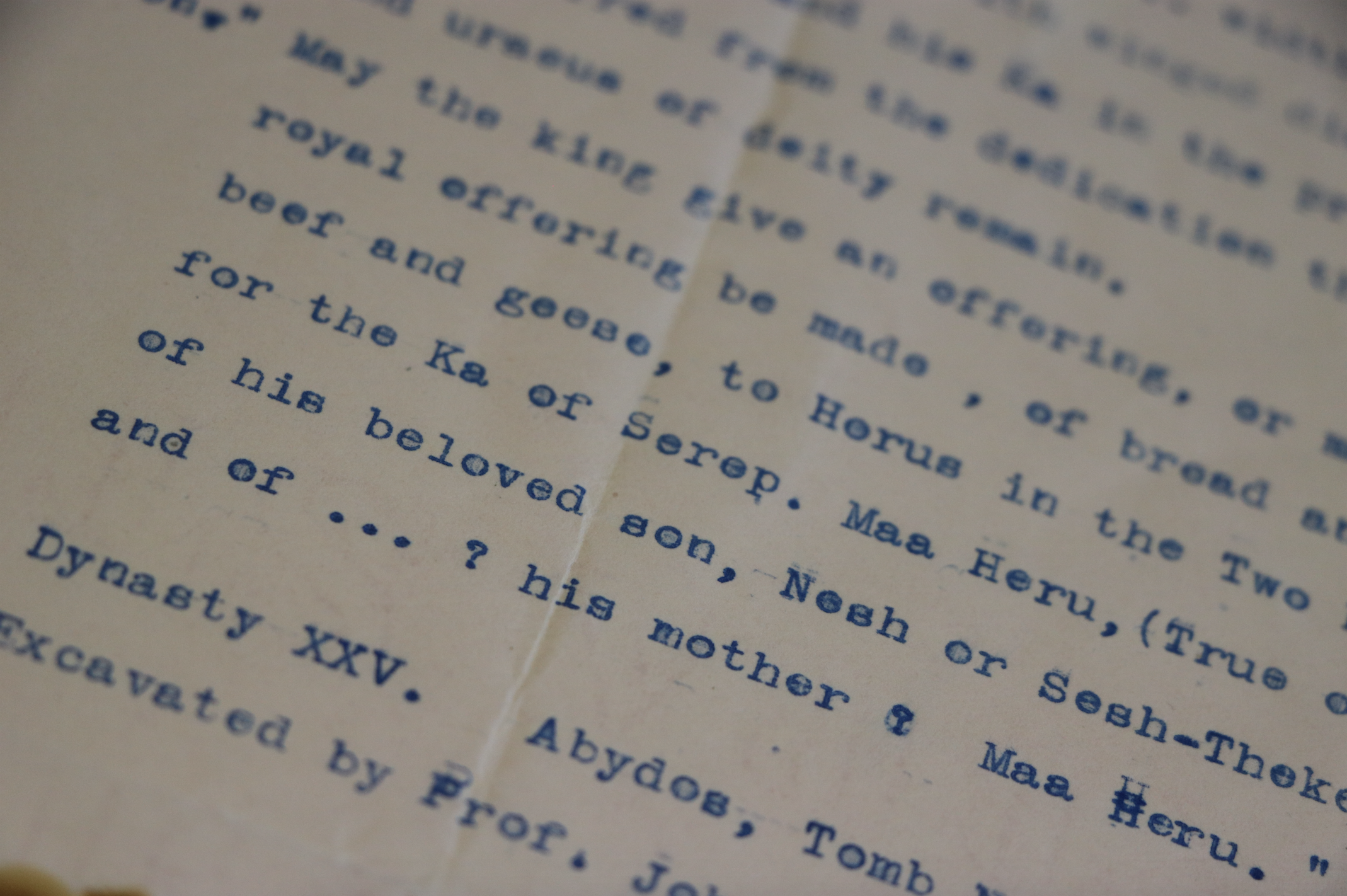By Amara Thornton (Research Officer, Ure Museum)
The “Collectors, Curators and Cataloguers” workshop held on 12 June at the Museum of English Rural Life and the Ure Museum at the University of Reading was a great opportunity to bring together a group of scholars, curators and archivists revealing and analysing the history of women’s contributions to museums in the UK and beyond. (Speakers and paper titles are listed here.)

I thoroughly enjoyed listening to all the exciting research presented (for tweet-notes on the presentations check out the #collcurcat hashtag). The ensuing discussions highlighted both the triumphs and trials these histories (and the telling of them) encapsulate, and how we as historians can begin to contextualise, question and change the narrative.

As part of the day, the Ure Museum hosted a handling session, featuring highlights from the Museum’s archive, and loan items from the University Library. I brought along my copy of the Englishwoman’s Year Book and Directory – in the 1909 edition of which there is a special section on “Women Museum Curators”.

One of the archive items selected was a rather devastating letter to Percy Ure from collector Julia Katharine Steele, from whom he purchased a number of Greek antiquities for the Museum of Greek Archaeology (now the Ure Museum). In it, she expressed admiration for Annie Ure, the Museum’s curator, and Annie Ure’s ability to continue her own research while looking after a family. Julia Katharine Steele considered herself unlucky in this respect, her own research interests abandoned. She wrote:
“Your wife must have her work cut out with a young baby to look after + her investigations of vases. I am afraid my studies in Mythology in the end gave way to domestic cares, + my researches into serpent worship + tholoses [sic] came to an abrupt ending – but I never had an orderly mind, with that equipment, I think it would be possible to combine the two!”

Another letter featured in the handling session was found by Assistant Curator Jayne Holly in a folder relating to the purchase of Egyptian antiquities from the Institute of Archaeology in Liverpool. We were looking for something to include relating to Margaret Elizabeth “Meta” Williams, the Institute’s Secretary, who had provided Annie Ure with valuable information on the Liverpool antiquities now in the Ure Museum. The letter in the Ure Museum archive includes label text for one of antiquities, showing Meta Williams’s role as an informal cataloguer and curator.

The workshop handling session was organised to complement a temporary display “Hidden Women in the Archive: Collectors, Curators and Cataloguers” now showing at the Ure Museum until 10 September.
The display features archives and artefacts associated with ten women, Annie (Hunt) Ure, Hilda (Urlin) Petrie, Ellen (Exall) Barry, Gertrude (Hill) Hurry, Meta Williams, Norah Jolliffe, Julia Katharine (Wickes) Steele, Anne Mary Wickes, Henrietta Lawes, and Nora (Kershaw) Chadwick. Each of them represented collecting, curating and/or cataloguing; and in each case relevant archive material was paired with a relevant artefact or artefacts in the Ure Museum’s collection.

We will be transforming the display into an online exhibition over the next month or two, so that those who can’t make it to the Ure Museum in person will be able to do so virtually. More to come!

